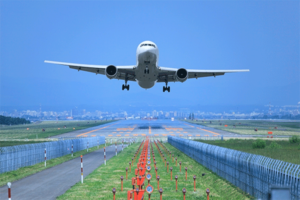Introduction
In the field of healthcare, efficient and safe patient transportation is a critical aspect of providing high-quality care. Medical transport equipment plays a significant role in ensuring patient comfort, safety, and timely access to necessary treatments or services. When it comes to moving patients from one location to another, whether it's within a healthcare facility or across long distances, having the right equipment on hand can make all the difference in ensuring a smooth and successful process. In this article, we will discuss the various types of medical transport equipment available, ranging from basic necessities to specialized tools for handling complex patient needs. Through gaining a better understanding of these essential components, healthcare providers and transport teams can make more informed decisions about what equipment is most appropriate for their specific situations, ultimately leading to improved patient outcomes and satisfaction.
Basic Medical Transport Equipment
Having the right medical transport equipment is critical for ensuring patients receive the necessary care during transportation. In this section, we will explore the most essential equipment that plays a key role in safely transporting patients from one location to another.
Gurney
A gurney, also known as a stretcher, is one of the most fundamental pieces of medical transport equipment required for moving injured or sick patients. Gurneys are specifically designed to be easily maneuverable and lightweight while also providing stability and support for the patient. They are typically equipped with adjustable side rails and secure straps to protect the patient from falling or shifting during transport.
Wheelchair
Wheelchairs are another crucial piece of medical transport equipment for patients who are unable to walk or need assistance with mobility. There are various types of wheelchairs, such as manual, powered, or transport chairs, to cater to different patient needs. Wheelchair features might include adjustable armrests, footrests, and backrests for added comfort and support.
Stethoscope
A stethoscope is an essential medical diagnostic tool used by healthcare professionals to assess a patient's heart, lung, and other body sounds. In a medical transport setting, stethoscopes are crucial for monitoring the patient's vital signs and detecting any changes in their condition while on the move.
First Aid Supplies
First aid supplies are important for attending to patients during medical transport and providing immediate care when necessary. Basic first aid supplies include items such as adhesive bandages, gauze, adhesive tape, antiseptic wipes, disposable gloves, and resuscitation masks. In addition, a well-stocked first aid kit should contain medications such as pain relievers, antacids, and anti-diarrheal and anti-allergy medications.
Patient Monitoring Equipment
During medical transport, patients' conditions can change rapidly, making patient monitoring equipment crucial for observing vital signs and detecting any deviations from normal patterns. Examples of patient monitoring equipment include blood pressure cuffs, pulse oximeters, and thermometers. These devices allow healthcare providers to track a patient's condition during transport and make necessary interventions if needed.
Communication Devices
Reliable and efficient communication between healthcare providers involved in patient transport is essential for providing optimal patient care. Communication devices such as two-way radios or smartphones enable medical transport teams to receive vital updates and relay important information about the patient's condition to receiving healthcare facilities.
Personal Protective Equipment (PPE)
To ensure the safety and well-being of both patients and healthcare providers during medical transport, appropriate personal protective equipment (PPE) is necessary. PPE includes items like gloves, face masks, face shields, goggles, and gowns, which act as a barrier to protect against potential exposure to infectious diseases or hazardous materials.
In conclusion, basic medical transport equipment is crucial for providing safe and effective patient transport. This equipment is indispensable in attending to patients' immediate needs and keeping medical transport providers informed and protected.
III. Advanced Medical Transport Equipment
As the medical needs of patients increase, it becomes evident that basic medical transport equipment may not always suffice during transportation. This section delves into the world of advanced medical transport equipment, which caters to patients with specific medical needs. Having the right advanced equipment on board can significantly impact the quality of patient care during transport.
1. Supplemental Oxygen Systems
Supplemental oxygen systems such as oxygen cylinders or portable concentrators play a crucial role in maintaining patients' oxygen levels during transport. These systems serve as a lifeline for patients with respiratory distress, asthma, or any medical condition requiring oxygen support.
2. Ventilators
Ventilators come into play when patients struggle with breathing autonomously. These advanced medical devices facilitate the movement of ambient air into and out of the lungs, making them essential for transporting patients with acute respiratory insufficiency or failure.
3. Cardiac Monitors
Cardiac monitors help track patients' heart rate and rhythm in real-time, ensuring that any abnormalities are detected and addressed promptly. These devices aid in identifying potential cardiac problems that might arise during transport, thereby improving patient safety and reducing the risk of complications.
4. Infusion Pumps
Infusion pumps provide accurate and controlled administration of medications, fluids, or nutrients to patients during transport. In cases requiring the administration of time-sensitive medications or a specific treatment regimen, having an infusion pump on board can be critical.
5. Advanced Airway Management Devices
Patients being transported might experience airway obstruction or require airway support. Advanced airway management devices like Laryngeal Mask Airways (LMAs), endotracheal tubes, or even surgical airways can prove to be essential for proper airway management during transport.
6. Suction Devices
Suction devices help clear airway obstructions caused by secretions, blood, or vomitus. These battery-operated or manually controlled devices can make the difference between life and death in emergency situations.
7. Portable Ultrasound Machines
Portable ultrasound machines give medical professionals real-time imaging capabilities for diagnosing and monitoring conditions during transport. They allow healthcare providers to visualize internal organs, blood vessels, and movement, assisting in accurate treatment and evaluation of patients.
8. Defibrillators
Defibrillators can be life-saving in cases of sudden cardiac arrest or life-threatening arrhythmias. By delivering an electric shock, these devices help restore the normal rhythm of the heart.
9. Patient Monitoring Systems
These systems continuously monitor patients' vital signs, such as blood pressure, pulse, oxygen saturation, and other essential parameters. They enable healthcare providers to respond promptly to any changes, ensuring the well-being of patients during transport.
10. Recharging Systems and Power Supplies
Ensuring that all the advanced medical transport devices have sufficient power during transportation is crucial. Portable recharging systems and power supplies guarantee the continued operation of life-saving equipment throughout the journey.
11. Rehabilitative Devices
For patients with limited mobility, rehabilitative devices like transfer boards, standing frames, slings, and lifts make transport safer and more comfortable. These tools aid in moving patients efficiently and minimizing the risk of injuries.
12. Telemedicine Tools
Telemedicine tools make it possible for healthcare providers to remotely communicate and share vital patient information with specialists and other medical professionals during transport. They can be invaluable in consulting for appropriate treatment and care.
13. Neonatal and Pediatric Equipment
Special equipment should be available for neonatal and pediatric patients. Incubators, pediatric ventilators, and specialized monitoring systems enable optimal care for transporting these highly vulnerable patients.
14. Temperature Control Systems
Maintaining a suitable temperature is vital for patient comfort during transport, especially when dealing with vulnerable patients like newborns or those with burn injuries. Temperature control systems ensure that environmental conditions are appropriately regulated according to the patient's needs.
15. Stretchers with Advanced Features
Stretchers are fundamental for transporting patients, but some specialized models offer advanced features, such as the ability to recline, elevate, or lower, facilitating patient positioning and comfort during transport.
In conclusion, advanced medical transport equipment bridges the gap between rudimentary tools and complex patient needs. Acknowledging the importance of this advanced equipment can lead to significantly improved patient care. Thus, investing in the proper technology not only benefits patients and healthcare providers, but it also contributes to the overall quality of the medical transport industry.
IV. Choosing the Right Equipment for Your Needs
Selecting the appropriate medical transport equipment for your specific needs is a crucial aspect of ensuring safe and efficient patient transfers. The following factors must be considered when making these decisions:
1. Patient Age and Acuity Level
Different patient age groups, such as pediatrics, adults, and geriatrics, often require unique medical transport equipment to maintain safety and comfort during transit. Moreover, a patient's acuity level, or the severity of their medical condition, may necessitate additional specialized equipment. It is crucial to accurately assess the patient's needs and select the necessary equipment to facilitate a safe and smooth transition.
2. Transport Distance
The distance over which a patient needs to be transported significantly impacts the type and complexity of the required medical equipment. For short distances, basic equipment such as wheelchairs or mobile stretchers may suffice. However, longer journeys, especially those involving air or water transport, may necessitate the use of advanced life support systems, including oxygen tanks, ventilators, and cardiac monitors, to ensure the patient remains stable throughout the journey.
3. Desired Level of Mobility
When selecting medical transport equipment, it's important to consider the desired level of patient mobility during transit. For example, some patients may need to remain in a supine position, while others might be able to sit up with assistance. The transport equipment chosen should accommodate the patient's mobility needs while ensuring their comfort and safety.
4. Frequency of Transports
For healthcare facilities or transport services that handle patient transfers frequently, investing in high-quality, durable, and standardized equipment is essential. This will reduce the need for regular replacements, ensure consistent patient care, and minimize training time for staff members.
5. Available Budget and Resources
Medical transport equipment can be expensive, particularly specialized and technologically advanced devices. However, prioritizing patient safety and care should always be the primary concern. Striking a balance between cost and function is essential when selecting transport equipment for your facility or service.
In some instances, leasing or renting equipment might be a more cost-effective solution than purchasing it outright. Additionally, some manufacturers offer refurbished equipment at a lower cost, providing a viable option for facilities with budget constraints.
6. Equipment Maintenance and Training
Maintaining medical transport equipment in good working condition is crucial to ensure its proper functioning during patient transfers. As such, it's essential to establish a regular maintenance schedule and ensure that staff members receive suitable training to operate the equipment safely and effectively.
The Ultimate Guide to Choosing the Perfect Fulfillment Center for Your Business offers a comprehensive resource to further your understanding of selecting the right medical transport equipment for your needs.
7. Compliance with Regulations and Standards
In most jurisdictions, medical transport equipment must meet specific regulations and standards to ensure patient safety. This may include certifications from regulatory bodies or compliance with industry standards, such as the International Organization for Standardization (ISO). Ensure that any equipment you select meets these requirements to avoid potential legal issues and ensure the highest level of patient care.
In Summary
Choosing the right medical transport equipment is essential to provide the highest quality of care for patients during their transfer. By considering factors such as patient needs, transport distance, budget constraints, and regulatory compliance, healthcare facilities and transport services can ensure that they are equipped to handle a wide array of patient transport scenarios safely and efficiently.
V. Choosing the Right Equipment for Your Needs
Understand the Patient's Medical Condition
Before investing in medical transport equipment, it is crucial to understand the patient's medical condition and the anticipated needs during transportation. By knowing the patient's specific requirements, you can make informed decisions regarding which equipment is essential and which may be unnecessary. For instance, if the patient has a severe respiratory issue, it is vital to prioritize oxygen support equipment. Wealth of information about the patient's condition can significantly improve preparedness for their transportation needs.
Determine the Type and Duration of Transport
Transportation types and duration play a crucial role in determining the appropriate equipment. It is essential to consider the following factors:
- Local or long-distance transport
- Ground, air, or water transport
- Estimated transport duration
These factors will help you choose suitable equipment and resources. For example, a long-distance air transport may require advanced medical support and sophisticated monitoring systems, while local ground transport might only need basic first aid supplies.
Assess the Patient's Mobility Level
The patient's mobility will have a significant impact on the required medical transport equipment. Evaluate their ability to self-transfer or if they will require assistance, such as a wheelchair, stretcher, or a mechanical lifting device. Ensure that you have the proper equipment to accommodate the patient's mobility needs
Consider Accessibility Requirements
Providing safe and comfortable transport for people with disabilities requires special equipment and conditions. Consider equipment modifications and adaptive devices, such as lifts, ramps, and restraint systems, to ensure accessibility and comfort for patients.
Be Prepared for the Unexpected
While planning and anticipating medical equipment requirements is essential, you should also be prepared for unexpected situations that might arise during transport. Advanced life support supplies, emergency medications, and additional support equipment should be on hand, even if they might not be needed. A well-prepared medical transport team can quickly and effectively respond to unanticipated events and ensure the safety and well-being of patients.
Training and Expertise of Transport Personnel
Another factor to consider when choosing medical transport equipment is the training and expertise of the transport personnel. They must understand and be comfortable with the equipment to ensure proper functionality and optimize patient care. It is crucial to also have well-trained and knowledgeable transport personnel who can facilitate the equipment's proper use and ensure patient safety.
Cost and Budget Considerations
While it is crucial to provide the best possible medical transport equipment for your patients, it is also essential to consider budget constraints and cost-effectiveness. Therefore, evaluate equipment options and determine the most appropriate mix that balances quality and affordability.
Stay Updated on Technological Advances
Lastly, as technology advances, new and improved medical transport equipment is continually being developed. Staying informed on new equipment and evaluating its potential benefits for your patients can lead to improvements in patient care and outcomes.
In summary, selecting the optimal medical transport equipment involves understanding patient needs, transport parameters, and your resources at hand. By carefully considering these factors and staying informed about technological advances, you can provide the safest and most efficient transportation experience for your patients, ultimately leading to better patient care and outcomes.
Frequently Asked Questions
What are the essential types of medical transport equipment?
Essential medical transport equipment includes basic items like gurneys,
stethoscopes, and first aid supplies. These are vital for safely
transporting patients from one location to another and providing necessary
care during transport.
What kind of advanced medical transport equipment might be needed?
Advanced medical transport equipment is required for patients with specific
medical needs. Examples include oxygen tanks, ventilators, and cardiac
monitors. These items help ensure the safety and comfort of patients with
more complex medical conditions during transport.
How can I choose the right equipment for my medical transport needs?
To choose the right medical transport equipment, you should consider factors
such as patient age or acuity level, transport distance, and desired level of
mobility. Selecting equipment that is tailored to the specific transport task
at hand helps ensure the best possible care for your patients.
Why is using the right equipment crucial for efficient medical transport?
Using the right equipment for medical transport not only ensures the safety
and comfort of patients but also improves overall efficiency. With
appropriate equipment, providers can avoid delays and complications during
transport while reducing potential risks to both patients and transport
personnel.
What should I keep in mind while upgrading my medical transport equipment?
When upgrading your medical transport equipment, keep in mind the needs of
your patients, as well as any changes in technology or best practices.
Regularly evaluating and updating your equipment can help maintain safety,
efficiency, and quality of care during medical transport operations.







